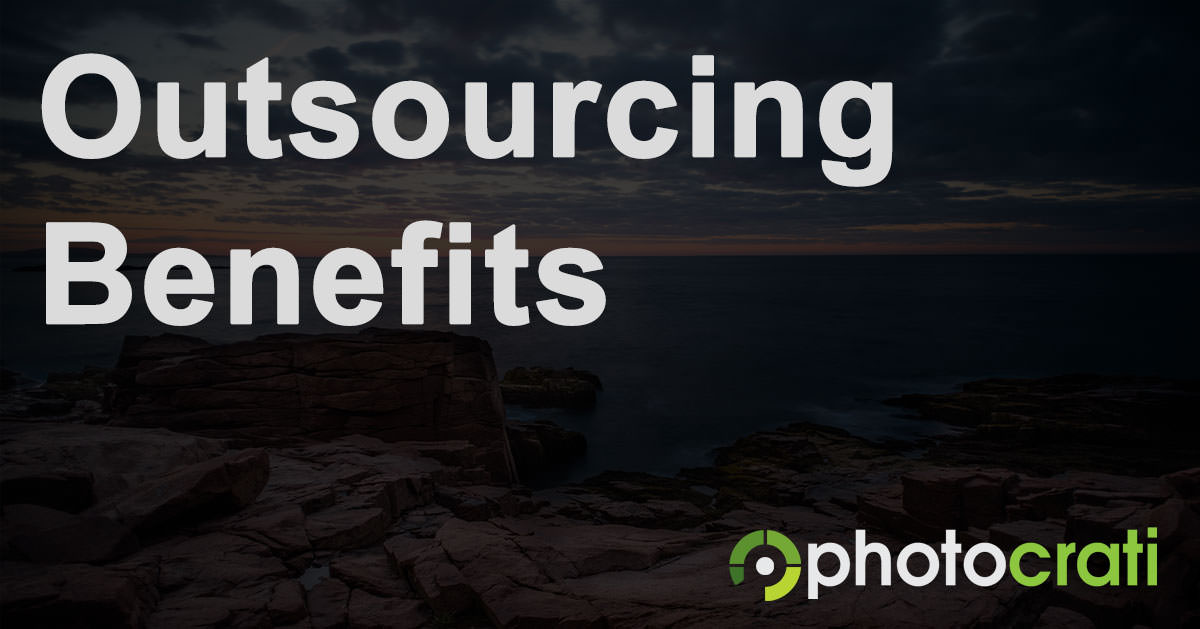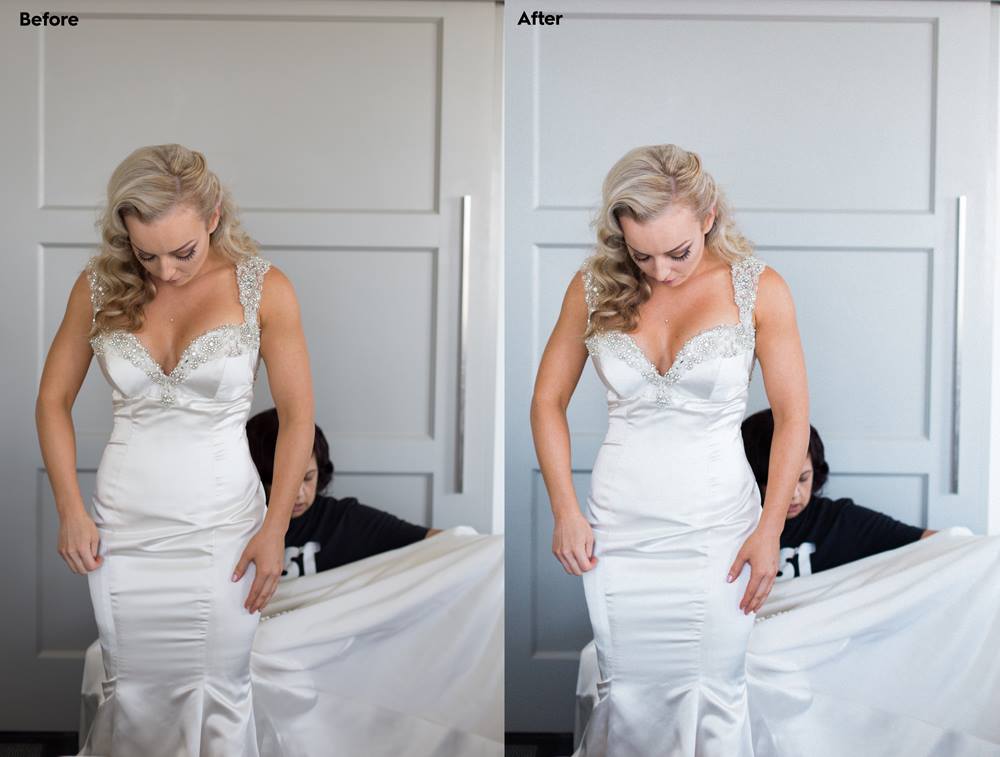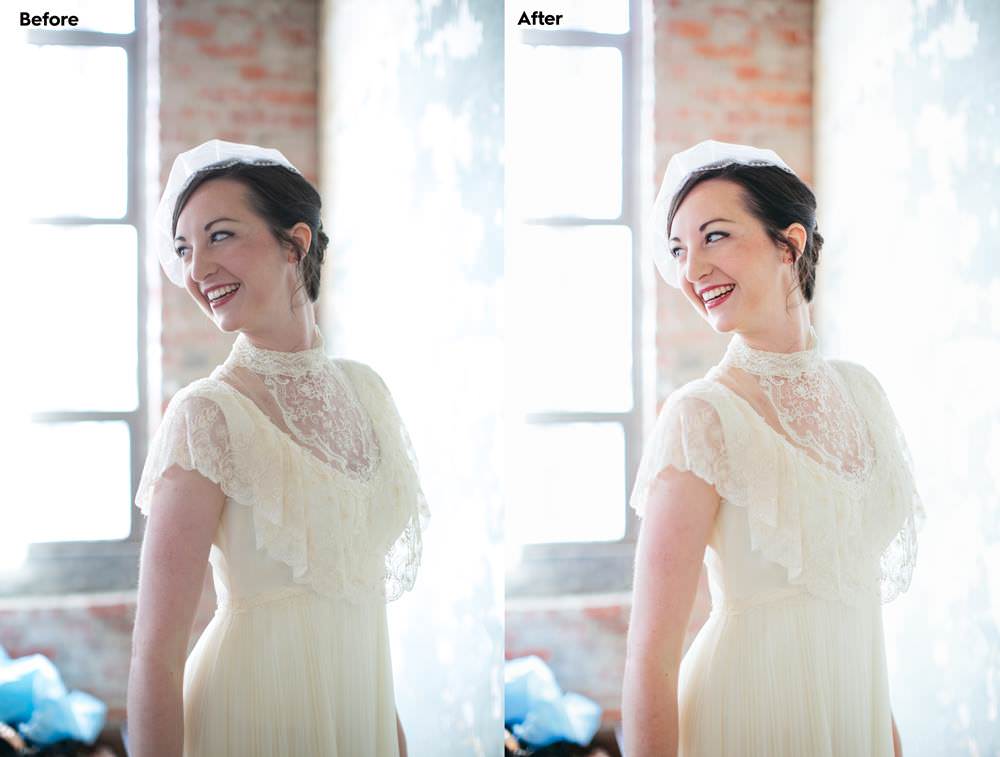
But what a lot of photographers don’t know is that there’s a huge financial benefit to outsourcing as well. Think of it this way: if you spend an average of 6 hours per week editing, that’s more than enough time to do a portrait session or conduct an in-person sales session. Depending on which option you choose, you could be making a few hundred bucks to a few thousand bucks with that time vs. sitting in front of the computer and you know, not making money. Since the cost of outsourcing is usually somewhere between $20-$40/hour (depending on what sort of editing you’re outsourcing, which company you choose, etc.), whether you choose to use the extra time for shooting additional sessions or conducting in-person sales, financially you’re coming out on top.
For example. If you use the extra 6 hours per week to conduct in-person sales and your sales increase to an average of $1,000 per client, you could potentially be bringing in an extra $1,000/week, or $52,000/year (though potentially more, as a lot of photographers I know that do in-person sales average more than $1,000 per sale). Compare that with the cost of what you’re paying an outsourcer per hour for the same amount of time, you’re spending about $120-$240 but making substantially more. For just that 6-hour period of time that’s a net profit each week of $760-$880, or $39,520-$45,760 annually.
Ok great. Now we know some of the reasons that photographers may outsource, let’s talk about how to actually go about it, and what to expect.
Determine What You Need
I’ve thus far just talked about editing, but you can actually outsource more than that. Album design, retouching, search engine optimization, blogging, and even things that aren’t related to photography directly like administrative assistance and customer support.
So your first step – determine what you need. Do you just want to give up the editing and/or retouching? Are album designs dragging you down? Are you a larger studio and need someone just to handle things like invoicing, scheduling sessions, following up with leads, etc.?
Or if you’re not sure what you need help with but know that you need to get some things off your plate, think of it this way: what parts of your business really aren’t your absolute favorite and you’d be totally cool paying someone else to take care of it for you? That can be a good place to start figuring it out.
While this article will mostly focus on what to expect when outsourcing editing, it’s still somewhere you want to start because different companies offer different services, and if you want to outsource retouching, album design, and editing, you probably want to look for a company or individual that does all of these things. Why? Simply for ease of use – it’s easier to keep all of your work with one service provider, so you don’t have to go back and forth delivering items to different companies for different things. A lot of post-production companies offer a number of different services, but not all of them offer the same ones. So it’s important to find one that meets your needs.
The types of jobs you want to outsource isn’t the only thing you want to consider though either – if you’re going to be outsourcing your editing, what type of editing are you looking at getting done? Do you need just a basic, clean edit, or do you need a company that’s going to work with any presets you have or have created? What about film and hybrid shooting? Do you need a company that can work with film presets and/or do matching between images taken with film and images taken with a digital camera? Believe it or not, there are companies out there that offer these types of services.
For example
Trial Edits
Most editing companies allow you to try their services for free in what’s called a ‘trial edit.’ The amount of images you send for a test edit will vary from company to company, but it will give you an idea of the kind of editing they’re going to do for you.
At this point you’re probably wondering, ‘So how will they know what my editing style is and how will they know to match it?’ That’s a good question. I can’t speak for other companies, but here is my method.
First off, I have all my potential clients fill out a questionnaire where they tell me a little bit about their editing style: clean, matte finish, neutral to warm, etc. With that in mind, I take a look at their website – blog posts, portfolio, etc., and even what they’ve shared on social media. So when I approach a trial edit, I keep a couple pages open on my web browser with their work in it while I edit so I have a solid representation of their style visible while I do the editing. This usually allows me to capture their style pretty well.
Now for me, what comes next is the really important part. Once I return the trial edits to a potential client (and don’t freak out if what you get back for a trial edit isn’t 100% perfect), I ask for feedback. Are they too bright? Too warm? To contrasty? Not enough contrast? This is the kind of stuff I’m looking for, because it helps me to know how close I was to what they’re looking for. If their feedback is, ‘great, this is perfect!’ then I’ll know that what I did is exactly what they’re looking for from here on out. If I didn’t quite nail it, having them tell me where I went wrong is crucial because it helps tell me what I need to change in the future to make it right. After all, I can’t fix something if I don’t know it’s wrong.
Even better, the more specific a client can be about what’s not quite right, the easier it is. I’m a pretty consistent editor, so many times critiques will come back with notes like, ‘Overall needs to be half a step lower in exposure’ or ‘Needs to be about 200 degrees warmer throughout. I can’t see what you see on your monitor, so having some specific feedback really helps me narrow down what you’re looking for.
At this point, your next question is probably, “How do I know what you’re seeing on your monitor is the same as what I’m seeing on mine?” We’ve all had to calibrate our monitors, and know that it’s a huge pain (but also know that if you screw it up, it can really, well, screw stuff up). And the simple answer to this question is, you don’t. There’s no way for me to know if what you’re seeing on your monitor is the same as what I’m seeing. Not unless we were able to put our monitors side by side and compare. (And unless we had the same exact computer and same exact monitor make and model, it’d be nearly impossible to match the images perfectly on both screens.)
But this is why the feedback I receive is so crucial: because there’s no way to check my monitor image with your monitor image, I have to do a relative comparison. For example. If the images I send back to you are too bright by about half a step (0.5), I can compare the images that I did that were too bright with the corrected images, and compare any images I edit in the future with the images that are exposed properly and the ones that are too bright. That helps to ensure that what I’m seeing on my screen, while isn’t exactly the same as what you’re seeing on yours, will at least look right on your monitor.
Transferring Files
I’ve discussed a little bit about the actual editing process, but something clearly has to happen before editing begins: files must be transferred from you to the outsourcing company. How is this done? Well, ti depends on your needs and the company you’re working with. I’ll go over some of the most common.
Dropbox – I know a lot of companies use online file sharing options like Dropbox, Copy, Box Sync, etc. These options are really cool, because it allows you to share a folder on your computer so you can transfer files by dragging and dropping. This has even become an especially excellent option ever since Lightroom 5 came out and the added feature, Smart Previews. I won’t get into detail here about what they are, but basically you can transfer a Lightroom catalogue and the Smart Previews file (which is generally a few gigs, give or take) and someone can edit images using the Smart Previews, with no need for the actual original images. In other words, you don’t have to send them 600+ RAW images, which can take up dozens of gigs of space.
FTP – Some companies like to transfer things via FTP. I personally don’t have experience with this, so I can’t give many details, but I do know there are companies out there that prefer this option.
Snail Mail – You can also mail a hard drive to your editing company as well. It will take longer to send through the mail (unless you pay for overnighting it every single time), but the advantage is you have all of the RAW images and they can send back the catalogue/XMP files all in one place. And if you have poor internet connection, this could be a good option.
What kind of files do I send?
This depends on what you want done. Do you want your images converted to jpegs when they’re done editing? Then you’ll have to send them the originals. Would you rather export them yourself or have one last look-over once edits are returned to you? Smart Previews is probably good enough. Do you want to send them some of your edits as well (like maybe from sneak peaks or something to make sure they match the final edit)? Then you can either do Smart Previews or the original files + a catalogue you already started, or the original files + the XMP files.
Won’t it take a while if I transfer it online?
Well, yes, of course it will. But taking a few hours is still faster (and much less effort) than shipping something (unless of course like I mentioned, you have a bad internet connection), and even taking the time to package something for shipping and taking it to the post office. You can just drag and drop on your computer and the files are already on their way. If it’s bogging down your computer you can either limit the amount of bandwidthDropbox/Box Sync/etc. is allowed to use, or do it right before bed and let it sync while you’re sleeping.
Turnaround Time and Final File Formats
The time it takes for you to receive your files back from the outsourcing company will vary from company to company, and sometimes from job to job depending on how much editing you need done. After all, it takes much longer to edit a 1,200-image wedding than it does a 50-image portrait session. Companies with larger staffs usually send stuff back within a few days, but companies with smaller staffs (or one-man shows) can take longer. If you need something back by a certain date, a lot of companies also offer expedited services, but for additional rates and fees.
The file format of the finished product they send back to you will depend also on the company and the kind of file you would like to receive. Some companies will send you a catalogue, some will send you a catalogue and XMP files, some will send you just XMP files, and some will send you any combination of that, plus jpegs. It all depends on what they offer, and what your needs are. For most of my clients, I use the Smart Previews method discussed above, so I always send back a catalogue. I used to send jpegs because I used to have my clients send all of the RAW images to me for each job, but since LR 5 came out I just do Smart Previews and Catalogues (the exception being for portrait sessions because 50(ish) RAW images overall don’t take up much space or that long to transfer digitally, and for those jobs I send back jpegs. Keep in mind too – it will take a little longer to get jpegs back than it will a catalogue/XMP files, simply because the file sizes overall are larger. (And the amount of time extra it takes may only even be a few hours, which many times is negligible.)
Will everything that I get back be perfect every time?
Yeah, no. The more and more you work with a company, the better time they’ll have on learning your style and how you handle difficult lighting situations. But there will still be things that come up where they will edit it a little bit differently than you will have edited it. Simply put, we are not mind readers. We can get really good at it if we work with the same photographers over and over again, but there will still be instances where something will come back and look just a bit off. Maybe the reception will be a bit too cool, or the backlit portion of the portrait session will be a bit to bright or dark, etc. I’ve been working with the same photographers for a couple years now and there are still times when something will be just a bit off in a certain section of images. In the end though, even if what is returned to you is close to what you want and it only takes an hour or so of final adjustments, that’s still saving you quite a bit of time and effort.
However, if things are consistently coming back just completely wrong or way off all across the board, you’ve given the company feedback and they’re still not picking up on it, and it’s taking you quite a few hours to fix every job you send them, it may be time to look for a different outsourcing company. Some companies are better at adapting to personal style and some companies are really really really good at a certain style, and prefer not to deviate outside of that too much. Neither way is either right or wrong, it’s all just a matter of what’s right or wrong for you and your photography.
Keep in mind too – if you do send a job back to the editing company for corrections, that will add time on to the final delivery date. I always try and have my clients send me jobs soon after they finish photographing the event in case for whatever reason they want me to fix anything. That way I know I’ll have enough time to edit the images, send them to the photographer, and have time for any corrections if anything looks off before the job is due to the photographer’s client. With weddings this is relatively easy since most weddings are due 6-8 weeks from the date of the wedding. If I have my photographer send me the images between 1-3 weeks after the date of the wedding and I get it back to them within a week of that, we’re still only at 4 weeks, which leaves 2-4 more weeks for any corrections or fixes to be made. And that’s usually more than enough time for that. So if you are thinking about outsourcing – try and make it a priority to get images from any job sent off to the editors sooner rather than later. It saves stress on your end, it saves stress on our end, you don’t need to pay expedited fees, and with any luck you can deliver them to the bride weeks before the contract requires you to.
For portrait sessions, usually turnaround time for delivery to the photographer’s client is shorter (a few days to a couple weeks). But the same idea applies. The sooner you can get it to the editor’s, the sooner they can send it back, the sooner you can look it over and send back any corrections that need to be made. And since there’s usually a lot less images in a portrait session than a wedding, corrections generally go super fast.
So bottom line – will it be perfect? Probably not. But it should improve over time with each editing job you send out, as long as you provide good, constructive criticism and the company is open to making adjustments. So be patient.
When should you start outsourcing?
If you’re getting really close to the wire on delivering images to your clients, outsourcing might be a great way to bail yourself out. And I’ve definitely had clients do this too at the end of the season when everything is super backed up. I totally get it. Or like I talked about at the beginning of this article, if you’re ready to incorporate in-person sales into your business and need some extra time in your schedule to accommodate that, you’re probably also ready to start outsourcing.
But If you’re not sure if you want to get started with outsourcing, but still sort of on the fence about it, then honestly, you’re probably ready. The best time to start outsourcing is before you need it. How will you know? Let me help you determine.
Go through your booked weddings/portrait sessions for the entire season. (If you don’t have your portrait sessions booked out 3+ months like you will most of your weddings, that’s ok – if you’re aiming to have about 2 portrait sessions per week, for example, just use that as a starting point.) The week following each wedding, start blocking off time in your calendar for culling, editing, retouching, etc. Don’t forget to do the same for each portrait session, including the time for the actual portrait session itself. Once you’ve done that, start blocking out the rest of your week – block off approximately how much time you spend on customer inquiries, in-person sales, product ordering, preparation, and/or shipping, and other administrative tasks you know that you do regularly on a daily/weekly basis. And be honest with yourself. Don’t block off only an hour for doing email, for example, if you know that you’ll end up on Facebook and it’ll take two hours. Take a good hard look at each and every task, and be honest with yourself on how long it takes. Now do this for every other week in your season.
If you start to notice that you’re having a hard time fitting it all into a regular 50 to 60-hour work week (let’s face it, who out there in the photography world works 40 hours a week and that’s it? Show of hands? Yeah that’s about what I thought) and still make all of your product delivery deadlines, you probably want to think about outsourcing before the season starts. And let me tell you – it’s much easier to train someone in on your editing style and work through sample edits when it’s not crazy insane wedding season (or senior portrait session season, etc.).
Another easy way to tell if you’re ready is to just think of last year. Were you cutting it close on a lot of your deadlines and the delivery dates outlined in your contracts? Then it’s probably also time to start thinking about outsourcing.
One final note…
Outsourcing should make your life easier and help your business run smoother. If it’s not, or if it’s becoming a financial burden, you’re doing it wrong. Something in the whole process is a little bit off, and the pieces aren’t adding up. Outsourcing should be something that helps you move forward in your business and become more profitable, not the other way around.
–





Abbie
29 Mar 2015fantastic tips and points, useful great post! thanks
Bhavesh Parikh
7 Aug 2018yes, there are most of the useful outsourcing photography business and many doors open for the new startup business. it’s really great opportunities for newcomers.